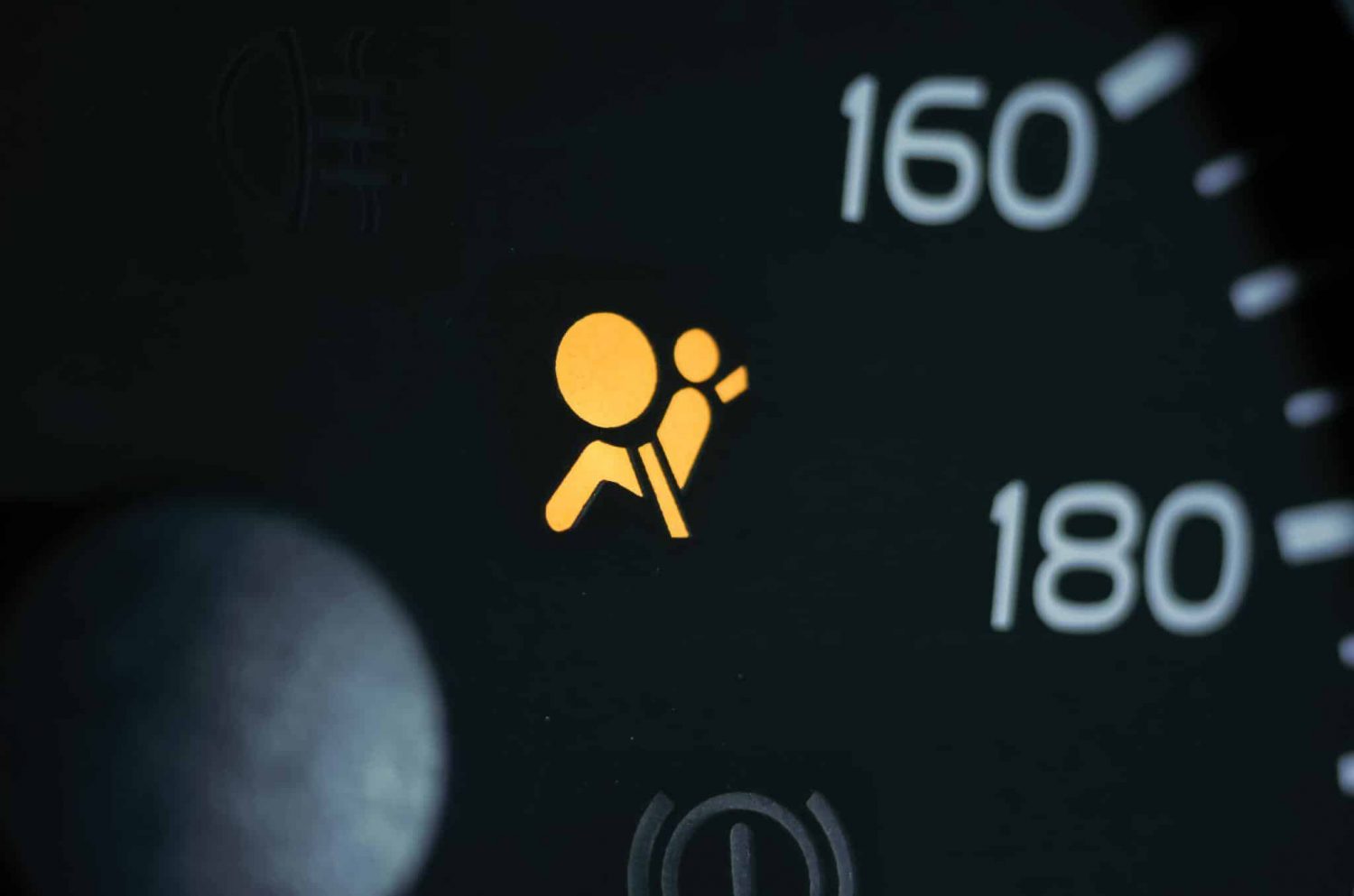If you’ve noticed that your SRS airbag light is randomly lit up on your dashboard, you may have found the phenomenon extremely alarming. It’s already inconvenient enough to know that you’ll need to take your car in for maintenance – but it can be quite scary to notice if you’re driving when the light turns on.
Luckily, issues that cause the SRS light to activate are generally straightforward to resolve. In this article, we’ll explain everything you need to know about SRS and how to reset this system in your vehicle.
What Does SRS Mean?
SRS stands for Supplemental Restraint System. This system is used to keep occupants of a vehicle safe in the event of a car crash or sudden stop. It controls the airbags, automatic seatbelts, and restraints inside your vehicle.
To best protect occupants, the SRS system reacts to inputs from several sensors within the vehicle. The system monitors braking, deceleration, impacts, and passenger presence to make the best possible movements to protect passengers.
What Causes The SRS Indicator To Turn On?
Generally, you can expect the SRS light to flash for a few seconds when you turn your vehicle on. But if the SRS light remains illuminated, you must identify and resolve the underlying cause. Keeping your SRS at optimal functioning will ensure you can drive safely.
Essentially, the SRS indicator will turn on if there is an issue with one of the components of the Supplemental Restraint System. These issues can sometimes be induced by easy-to-resolve external factors, while others will require the assistance of an experienced technician to resolve.
Here are some underlying causes you might observe as you investigate why your SRS indicator is turned on.
Malfunctioning Seat Belt Latch
Seat belts work in conjunction with airbags to protect the occupants of a vehicle in the event of a crash. If the seat belt latch isn’t locking properly, it may cause the SRS to malfunction and the airbag light to illuminate.
Many modern SRS prevent the airbags from deploying when a seatbelt isn’t latched correctly to reduce the risk of injury. Verifying that all seat belts latch properly and removing debris from the buckles will ensure that the seat belts and airbags continue working as intended.
Dead SRS Backup Battery
The internal computer of your car’s SRS relies on the car battery and a small backup battery for power. The backup battery ensures airbags can deploy and other safety measures can be taken, even if your car battery is disconnected in a crash.
If the backup battery for your car’s SRS dies, you may notice that the system begins to exhibit strange issues. The vehicle will generally light up the airbag indicator to alert you that the backup battery has died. You will need to replace the battery to restore full function.
Internal Damage To The SRS
If your car has recently been involved in an accident, it may have suffered damage to the SRS. If the airbags were deployed, internal damage is sure to have happened. You cannot repair this issue at home using second-hand parts.
If you believe your SRS system suffered damage during a crash — particularly if your airbags were deployed — you should work with an experienced mechanic to make the proper repairs. Verifying that your SRS system works correctly may save you from danger later.
Malfunctioning SRS Computer
Your car’s SRS monitors the information taken in by various sensors with a central computing device. If this computer fails, the SRS will be unable to make judgments for airbag deployment or seat belt tensioning.
The computer within the SRS is also known as the “black box.” An operational black box is essential for providing information to insurance companies and law enforcement after a crash. If your car doesn’t seem to respond to seat belt tension or weight in the seats, you should visit a technician to have the SRS computer serviced.
Faulty Passenger Occupancy Sensor
The SRS within your vehicle relies on various information to make the best possible judgments for airbag deployment and seat belt tensioning. One of the most valuable sources of data is the passenger occupancy sensor.
If the passenger occupancy sensor is broken or gives the SRS false data, it can negatively impact your car’s SRS and prevent the system from working as intended. Remove any heavy objects from the seats. If the issue isn’t resolved, you may need technicians to check the sensors.
Corroded SRS
External conditions can often impact the performance of the SRS within vehicles. If excessive moisture reaches the sensors and components that allow the system to function, these components may gradually break and cause the system to fail.
Drivers in humid or wet climates are more likely to encounter corrosion as the underlying cause of their SRS malfunction. If you suspect that your car may be malfunctioning due to exposure to prolonged moisture, you should allow a technician to inspect the systems within the vehicle thoroughly.
Faulty Clock Spring
Inside the Supplemental Restraint System of your vehicle, a component known as the clock spring enables you to turn the steering wheel freely without activating or interfering with the airbag inside the wheel.
If the clock spring is damaged, your car’s SRS may experience issues. Many drivers notice that the SRS light suddenly begins staying illuminated as they drive. Addressing a damaged clock spring is vital for preventing problems with airbag deployment.
How To Reset SRS
Generally, the assistance of an experienced automotive technician is needed to reset the SRS system. Resetting the SRS usually requires specialized tools, and visiting a technician has the bonus that you can verify that nothing is wrong with your vehicle.
You can sometimes reset the SRS lights using the ignition, however. If a temporary issue, like a heavy object on the seat, caused the indicator to light up, you might find that resetting the system resolves the problem. But in other cases, you must address the underlying cause before the SRS can be completely turned off.
To reset the SRS, insert the key into your car’s ignition and turn on the electrical components. Allow it to remain powered for around 20 seconds until the SRS light turns off, and then turn the key to power off the ignition. Wait several seconds.
Repeat the process of starting the car’s electrical components and turning the vehicle off several times, ensuring sufficient time is given to allow the SRS to cycle on and off. After several cycles, turn the engine on and watch the dashboard to see if the SRS light remains off.
Maintaining Your Vehicle Properly
Indicators like the SRS light are meant to help drivers stay safe by alerting them to potentially dangerous situations. If your car seems to have the SRS light powered on constantly, you should visit an experienced auto technician and restore your car’s SRS to full function as soon as possible.



